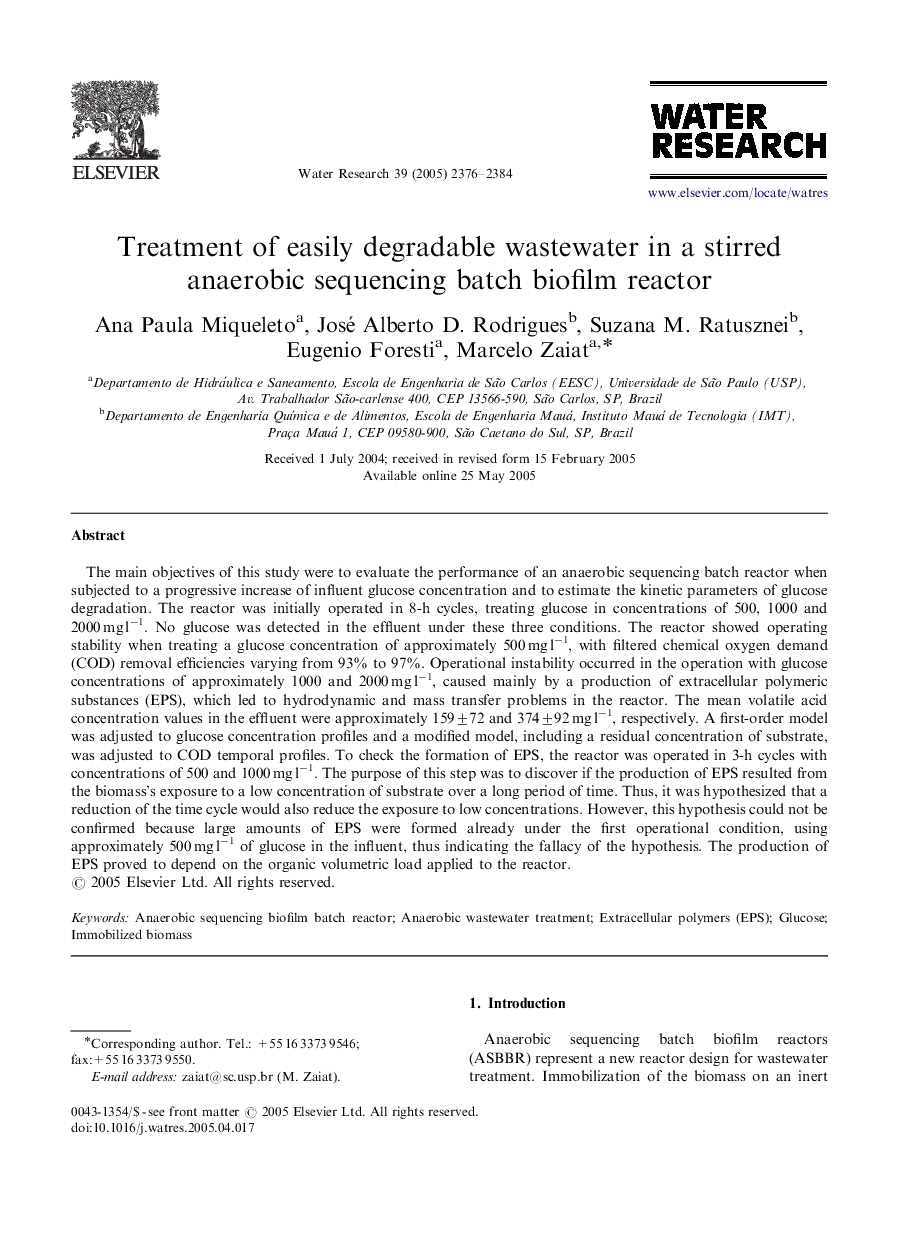| کد مقاله | کد نشریه | سال انتشار | مقاله انگلیسی | نسخه تمام متن |
|---|---|---|---|---|
| 4487051 | 1317010 | 2005 | 9 صفحه PDF | دانلود رایگان |

The main objectives of this study were to evaluate the performance of an anaerobic sequencing batch reactor when subjected to a progressive increase of influent glucose concentration and to estimate the kinetic parameters of glucose degradation. The reactor was initially operated in 8-h cycles, treating glucose in concentrations of 500, 1000 and 2000 mg l−1. No glucose was detected in the effluent under these three conditions. The reactor showed operating stability when treating a glucose concentration of approximately 500 mg l−1, with filtered chemical oxygen demand (COD) removal efficiencies varying from 93% to 97%. Operational instability occurred in the operation with glucose concentrations of approximately 1000 and 2000 mg l−1, caused mainly by a production of extracellular polymeric substances (EPS), which led to hydrodynamic and mass transfer problems in the reactor. The mean volatile acid concentration values in the effluent were approximately 159±72 and 374±92 mg l−1, respectively. A first-order model was adjusted to glucose concentration profiles and a modified model, including a residual concentration of substrate, was adjusted to COD temporal profiles. To check the formation of EPS, the reactor was operated in 3-h cycles with concentrations of 500 and 1000 mg l−1. The purpose of this step was to discover if the production of EPS resulted from the biomass's exposure to a low concentration of substrate over a long period of time. Thus, it was hypothesized that a reduction of the time cycle would also reduce the exposure to low concentrations. However, this hypothesis could not be confirmed because large amounts of EPS were formed already under the first operational condition, using approximately 500 mg l−1 of glucose in the influent, thus indicating the fallacy of the hypothesis. The production of EPS proved to depend on the organic volumetric load applied to the reactor.
Journal: Water Research - Volume 39, Issue 11, June 2005, Pages 2376–2384